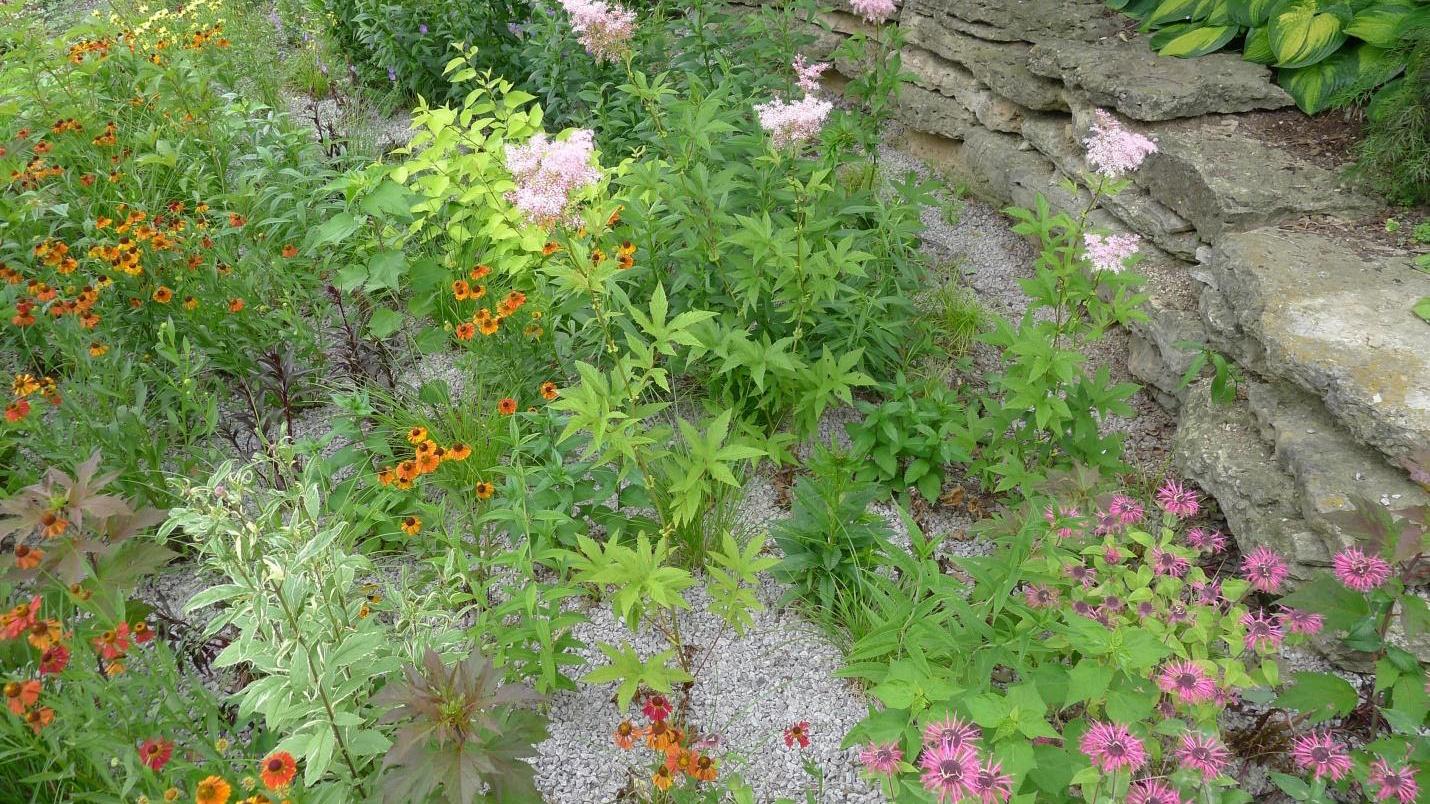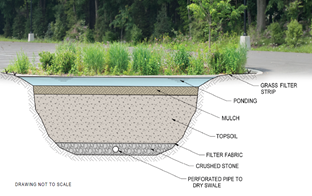Rain Gardens

Rain gardens are designed to collect water and beautify a garden. They allow water to sink into the ground in about 48 hours rather than sloshing down storm drains. Creating your own rain garden is simple:
Easy and cost efficient. Building a rain garden in your own yard is probably the easiest and most cost-efficient thing you can do to reduce your contribution to storm water pollution.
Flexible design. Designs can be any shape or size, employing a variety of trees, shrubs, flowers and other plants that are adaptable to both wet and dry conditions.
Layers are the way to go. Beneath the plants, layers of mulch, soil and sometimes gravel catch excess water and slowly disperse it through the ground and back into the water table.
Formal or informal. Rain gardens can be formal or informal, include wildflowers and ornamental grasses, and incorporate pathways and other landscape elements.
Can be very effective. They can be built by hand and have the potential to save thousands of gallons of water.
Learn how to build a rain garden from UCANR
and more on North Coast rain gardens from UCCE.

